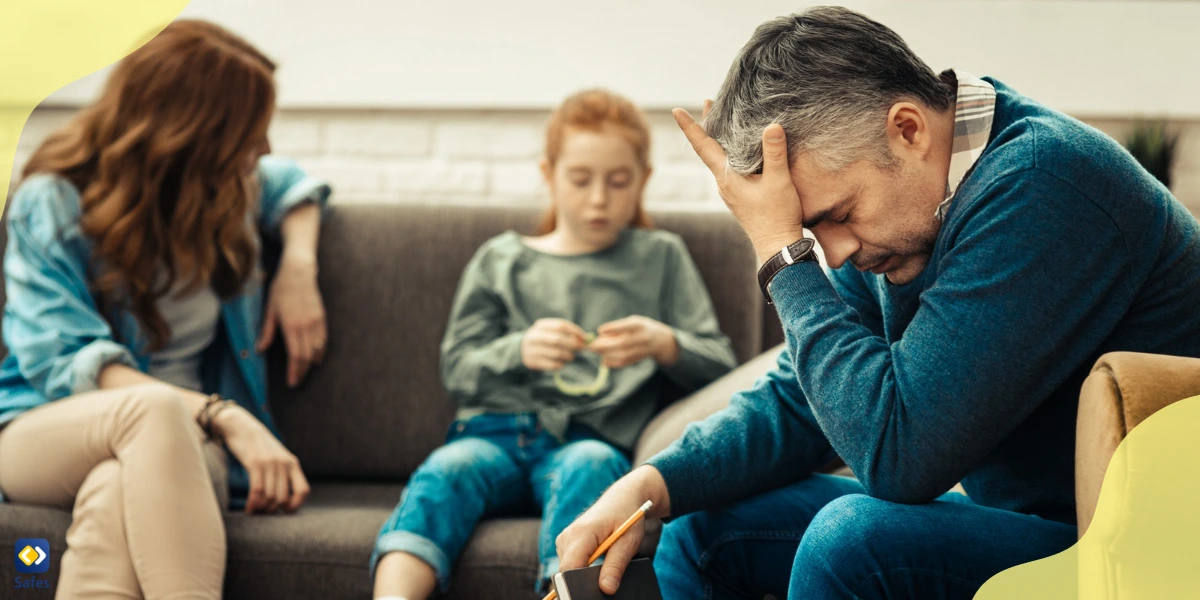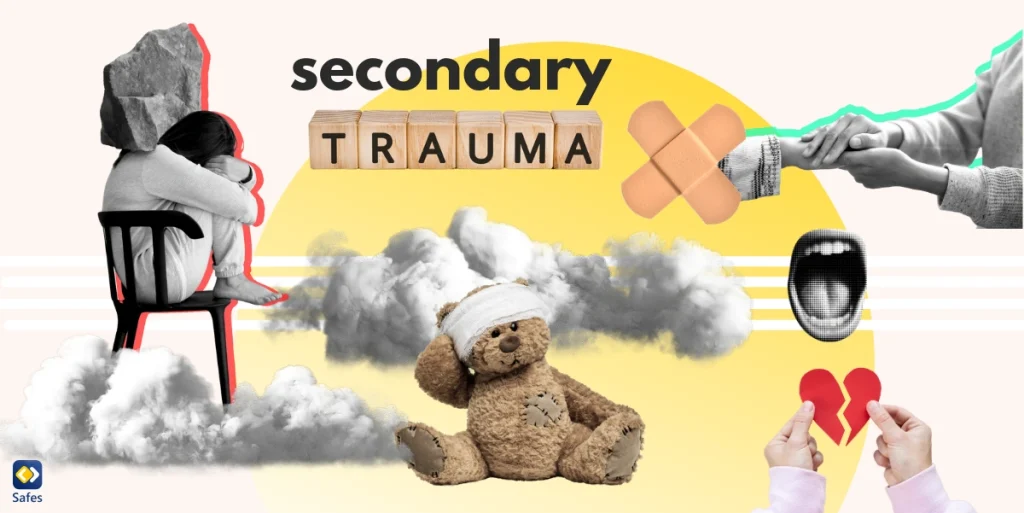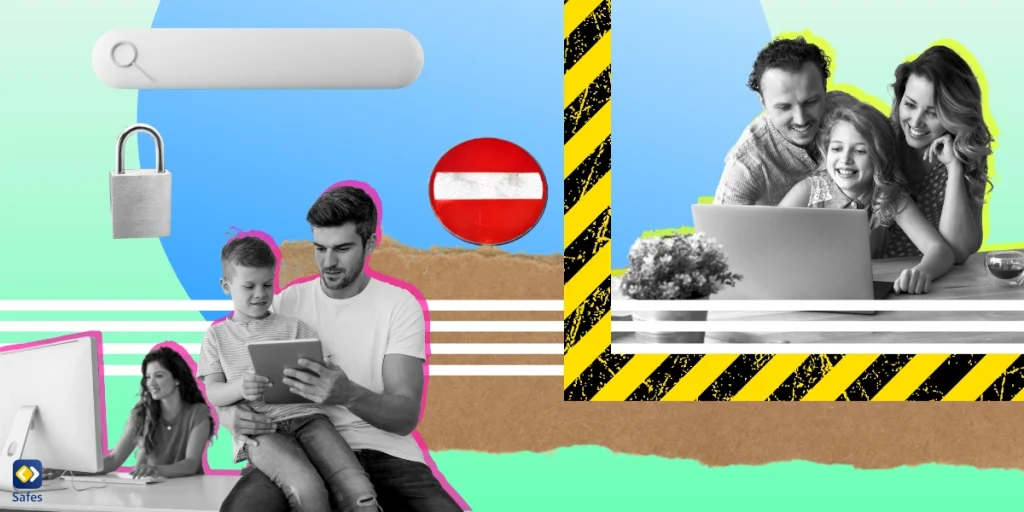Secondary trauma is a concept that every parent should be familiar with. To put it simply, examples of secondary trauma happen when someone is exposed to traumatic experiences through someone else, without really experiencing them first-hand. The secondary trauma definition may remind you of the trauma associated with PTSD but without direct exposure to the trauma itself. Besides those such as social workers and police officers, who work in traumatic environments, parents with children affected by trauma are at the risk of experiencing secondary trauma. For parents, understanding this phenomenon is crucial because it can affect not only their sense of well-being but also their ability to effectively assist their children in coming through the traumatic experience.
Understanding Secondary Trauma
Compassion fatigue, also known as secondary trauma or vicarious trauma, and sometimes called secondary traumatic stress, especially plagues parents. The trauma of this kind comes when someone is greatly affected by another person’s suffering and their traumatic stories. This happens a lot to parents who witness their children’s traumatic situations or to those involved in the healthcare field, social work, or law enforcement who face trauma head-on every day. Secondary trauma develops in contrast to primary trauma by being acquired indirectly, mainly through one’s hearing of the recounting of traumatic experiences or witnessing the children being affected by horrific events.
Vicarious Trauma vs. Secondary Trauma
When we talk about vicarious traumatization, we are actually focusing on the process in which empathy with the trauma sufferer leads to changes in the inner experience of the person trying to work with them. The term “secondary trauma,” however, involves a range of reactions from parents that vicarious trauma may be a part of.
Signs and Symptoms of Secondary Trauma in Parents
Parents who have been exposed to their children’s trauma or who work in trauma-exposed professions should be aware of the following secondary trauma stress symptoms:
- Emotional and Psychological Symptoms: They may show signs of trauma including nightmares or intrusive thoughts about their children’s trauma, chronic worry, rage, indifference, and sadness. There may also be feelings of powerlessness, increased isolation, and a shift in mood that leads to cynicism and confusion.
- Physical Symptoms: People often experience symptoms of exhaustion, sleep problems, headaches, and stomach troubles. A weakened immune system resulting in recurrent infections might also be suggestive of secondary stress symptoms.
- Behavioral Changes: As a result of trauma, parents may display hypervigilance or hyperarousal, particularly over their children’s safety, avoidance of situations or talks involving trauma, difficulties with focus, and decreased productivity. There may also be a reluctance to discuss their painful experiences with their children to minimize more trauma exposure.
Recognizing these signs of trauma is a step towards parents’ well-being and increases their capacity to successfully assist their children. Managing symptoms of secondary traumatic stress requires awareness and suitable coping techniques.

Secondary Trauma in Families
Trauma does not only affect the person who has experienced it; it reverberates through families. For instance, parents with children who have experienced traumatic events such as domestic violence and natural catastrophes are likely to develop secondary traumatic stress disorder. In other words, one person’s trauma may result in indirect traumas in other members of the family, therefore becoming a shared family experience. This significantly impacts the dynamics of a family, leading to more problems if it remains unaddressed.
Unfortunately, trauma is often said to be “contagious” inside a family unit. When a kid goes through a terrible experience, it is normal for parents to experience secondary traumatic stress. This phenomenon has been shown in several studies, where post-traumatic symptoms experienced by people indirectly exposed to trauma, such as parents learning about their child’s traumatic experiences, have a substantial emotional and psychological influence on them. This shared trauma experience among families emphasizes the connection of emotional well-being among family members.
The Impact on Parents’ Mental Health and Daily Life
Secondary trauma may have a profound and diverse influence on the mental health of parents. This illness mimics the symptoms of PTSD and can have a significant impact on parents’ general well-being and capacity to operate daily. Secondary trauma adds another layer of mental anguish, including “mom guilt” or feelings of inadequacy and shame for not preventing the child’s trauma. Parents may have long-term trauma consequences such as anxiety, sadness, and emotional tiredness, which can interfere with their ability to care for and support their children.
Parental PTSD is a clinically important result of secondary trauma for both the parent and the kid. It can impair parents’ overall performance, impacting crucial parenting aspects like emotional availability, responsiveness, and the overall parent-child bond. Long-term impacts of trauma include disruptions in emotional well-being, which can affect future generations. Parents with poor mental health and emotional dysregulation may modify their parenting habits, potentially leading to bad developmental consequences for their children. Thus, identifying and managing secondary trauma is critical not just for the parent’s immediate well-being but also for their children’s long-term health and development.
Coping Strategies for Parents
Secondary trauma management requires a diversified strategy for parents experiencing compassion fatigue. Among the key tactics are:
- Defining Boundaries: Parents must set limits on their children’s exposure to depressing content and try to find a balance between their tasks as a parent and their responsibilities regarding their own health.
- Promoting Physical and Mental Health: Parents’ general health depends on regular physical exercise, a balanced diet, and reasonable sleep. A healthier parent can indeed handle secondary trauma better.
- Building a Strong Support System: Don’t forget that you always have your friends or family members as people you can trust to listen to what you have to say. These conversations help with your anxiety and stress and make you feel less lonely.
- Self-Care Activities for Children: One way parents can help minimize the impact of trauma on the family is to encourage children in self-care activities. Provide opportunities for physical exercise, an appropriate diet, and a secure environment. Besides helping the kids get better, these activities can also relieve stress for parents.
Seeking Support and Professional Help
Seeking professional support is critical for parents who are facing secondary trauma. The following examples are important to note:
- Creating a Support Network: This entails reaching out to family and friends for emotional support and understanding. Such networks can foster a sense of belonging and shared experience.
- Professional Counseling: Another way for parents to seek support is by having sessions with therapists, especially those who utilize Cognitive Behavioral Therapy (CBT), a very effective method in treating PTSD-like issues.
- Making Use of Online Resources: Several organizations and websites provide resources for dealing with secondary trauma. The American Institute of Stress is one of these organizations and parents may find it interesting when it comes to dealing with secondary trauma.

Safes: Keeping a Watchful Eye
In an age when children can be exposed to horrific content via numerous digital channels, our parental control app, Safes, emerges as an ally for parents. Safes is intended to let parents monitor their children’s activities across all of their gadgets beyond what something like Windows parental controls may offer, alerting them to any indicators of trauma or distress. This proactive strategy allows parents to engage early, perhaps preventing difficulties from escalating and leading to secondary trauma. Parents receive a piece of mind by employing Safes, knowing they have a tool to help preserve their children’s emotional well-being, while indirectly helping their mental health in the face of secondary trauma. Safes is available for both iOS and Android.
Concerned about secondary trauma and its impact on your family? Sign up for a free trial with Safes to support your loved ones.
Conclusion
Recognizing and managing secondary trauma in parents is more than simply being aware; it is about taking a proactive role in one’s mental health. Parents must recognize the warning signals, seek professional assistance when necessary, and preserve their own well-being via self-care and support systems. Remember that taking care of yourself is not just healthy for you; it is also an important element of giving the greatest care for your child.




